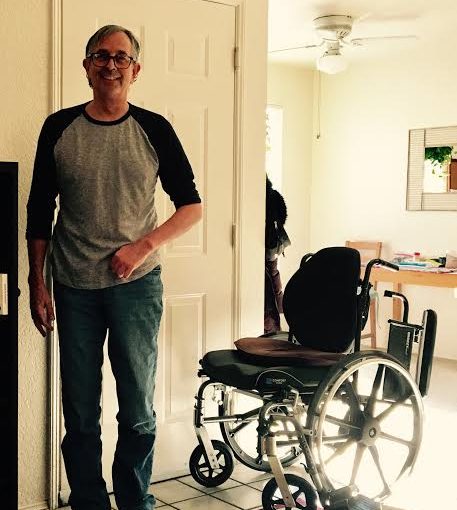People ask if I’m getting better. It’s a hard question to answer, but after 18 months post-stroke, I’m now able to explain what’s going on with my progress. I hope this blog will serve as an update, as well as information for other stroke survivors and their caretakers.
After a stroke, it can be hard to get answers. No one will predict your road ahead. They can’t because every stroke is different, and recovery depends on each person’s conscious and consistent effort.
On November 17, 2015, I came home from the hospital and started waiting to get better. The thing about stroke recovery is, if you do nothing, you get nothing in return. Here’s why:
My official diagnosis was Hemiparesis affecting left side as late effect of cerebrovascular accident (CVA). In layman’s terms, this means a blood vessel in the right hemisphere of my brain had burst, and it could no longer supply blood and oxygen to that specific area of my brain. That part is dead. Brain damage does not heal. This caused partial paralysis on my left side.
Recovery has become my full time job. It involves recruiting new areas of my brain to control motor function in my left arm and leg. I am fortunate to have had very few cognitive deficiencies. I also had very little facial paralysis.
In physical and occupational therapy, I’ve been learning to move and walk properly. When I first came home, I did whatever I could do, however I could do it. That was fine then, but my therapists explained why proper body alignment and posture are crucial to having a long life of mobility. Now, I have to focus on moving correctly, otherwise, I’ll never get out of this wheelchair!
If someone is touching my leg, I can barely feel it, yet I am able to walk for a little bit with a quad cane and some assistance. When standing, I don’t necessarily feel the ground below my left foot. It feels more like my foot is balancing on a tennis ball. The only way to tell if my weight is equally distributed is by judging the lack of weight in my right foot. This distinction was a turning point for me, and it was a celebration with my therapists. It meant I could practice standing by myself, correctly and safely.
As for my left arm, progress has been slower. In the hospital, a nurse hung a note that said, “Don’t forget your left arm.” If I move without awareness, I can injure myself. This takes constant reminding.
Imagine sitting in a chair with your eyes closed and having no idea where your arm is. Unless I can see it, I don’t know where (or how) it’s positioned. In the middle of the night, my arm tends to go on its own adventures. I sometimes have to look for it when I wake in the morning.
Shortly after the stroke, I learned that my leg would probably come back before my arm. No one explained why though. Turns out, the more complicated the movement of a limb, the more brain tissue it takes to control it. With the intricacies of the human hand, it makes sense that I’ll probably run a mile before I’ll play the guitar.
I often use the analogy that recovery is like a cross country road trip that’s measured in inches, rather than miles. If I’m traveling from Portland to Philadelphia, I have yet to hit Idaho. But now that I understand what I’m doing in therapy, I’m able to be patient and have confidence that I’ll get there eventually.
